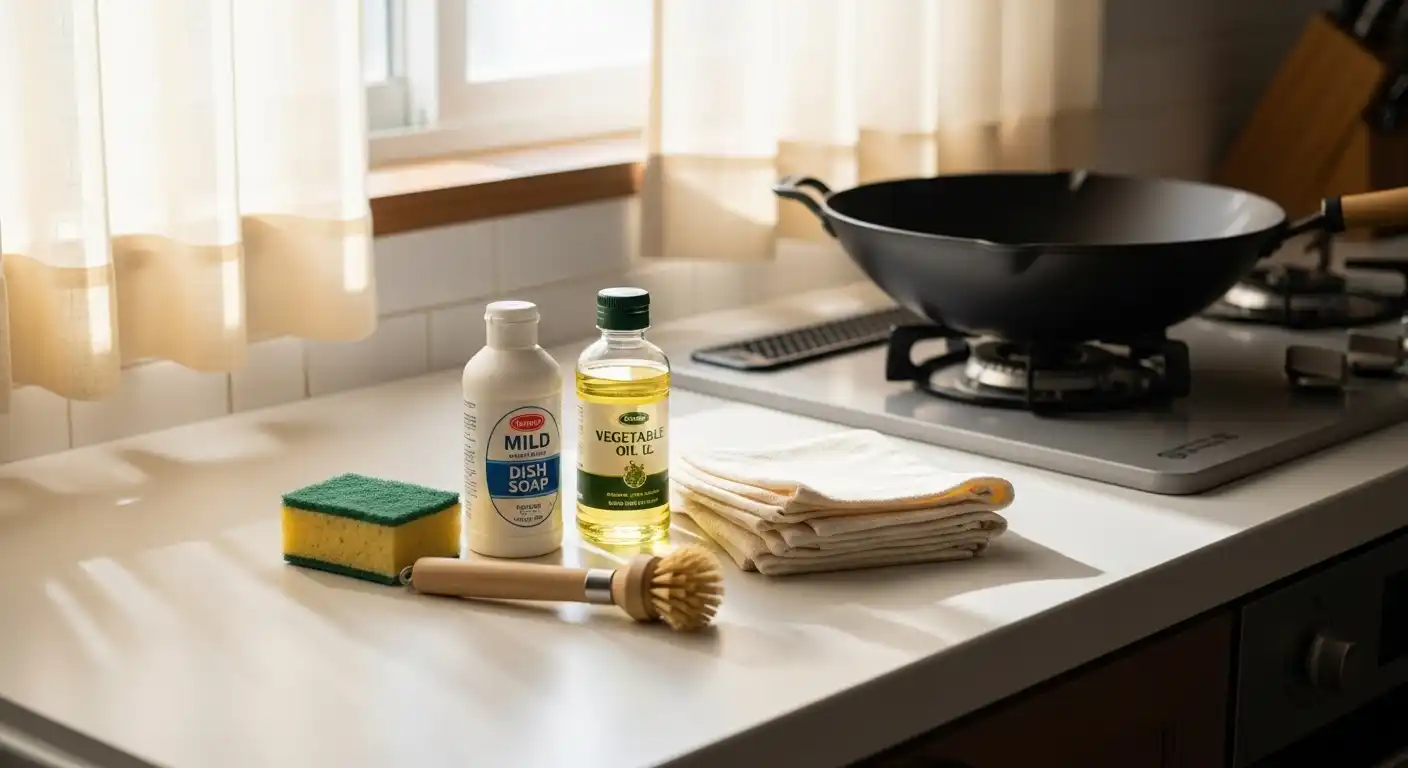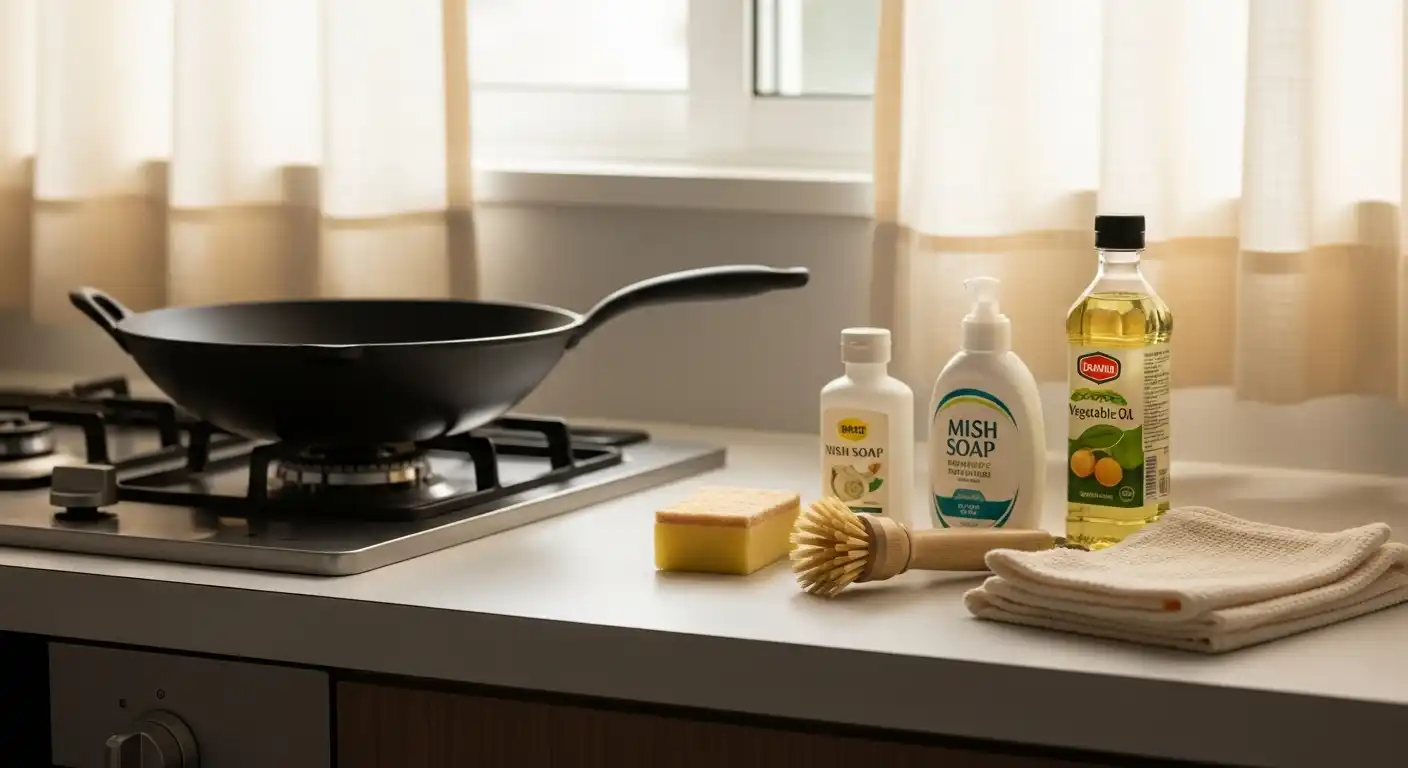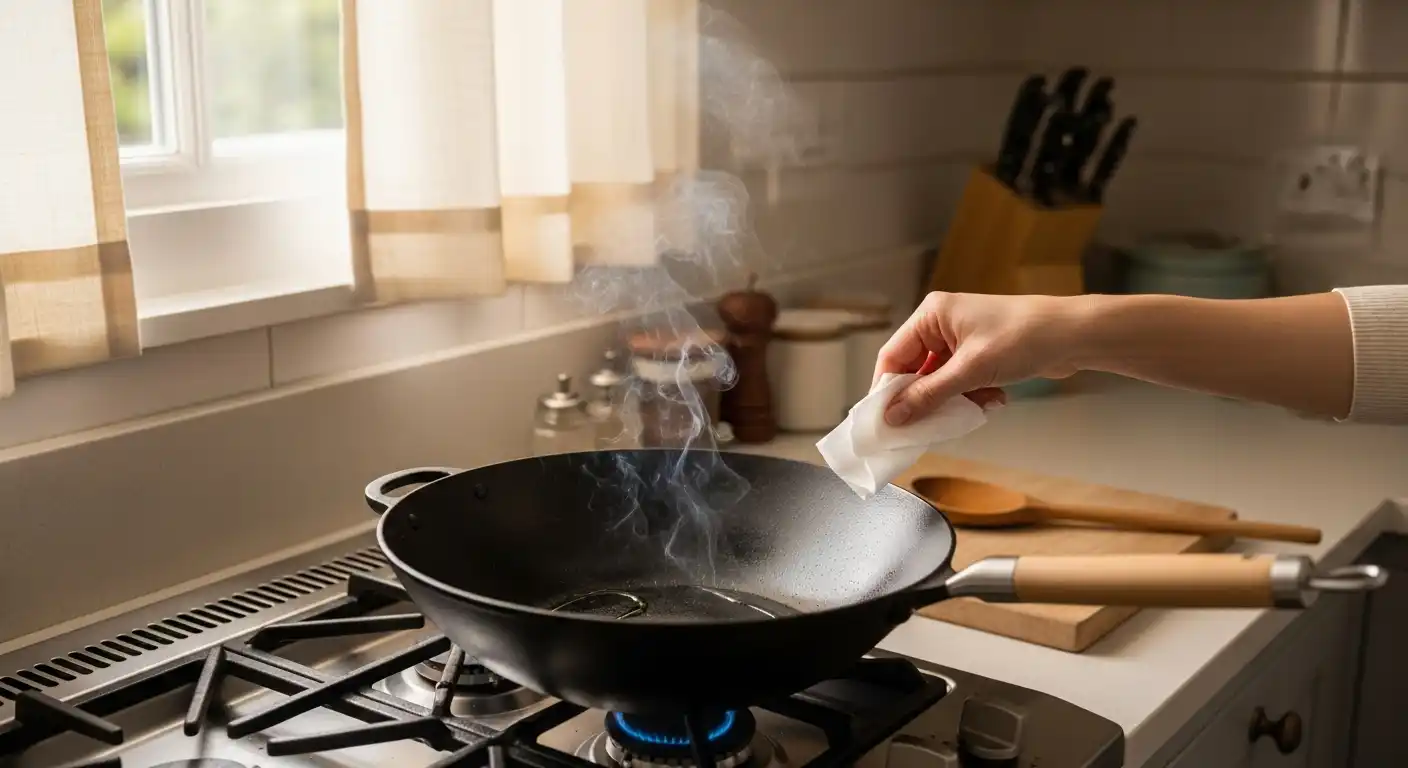How To Clean A Cast Iron Wok: A Step-by-Step Guide

Cast iron woks are a kitchen staple for many home cooks, prized for their durability and ability to create authentic stir-fries. However, maintaining that beautiful, seasoned surface requires proper care.
Learning how to clean a cast iron wok correctly ensures it stays non-stick, rust-free, and ready for your next culinary adventure.
Unlike other cookware, cast iron demands a unique cleaning approach to preserve its seasoning.
In this guide, we’ll walk you through the process step-by-step, share tips to avoid common mistakes, and explain how to keep your wok in top shape.
🎄 Christmas & Year-End Amazon Deals !
Don’t miss out on the best discounts and top-rated products available right now!
*As an Amazon Associate, I earn from qualifying purchases.
Why Proper Cleaning Matters for Your Cast Iron Wok
A well-maintained cast iron wok develops a patina—a glossy, non-stick layer formed through seasoning and use.
Cleaning it improperly, like using harsh detergents or soaking it, can strip this patina and lead to rust.
Proper cleaning not only extends the life of your wok but also enhances its cooking performance.
Curious about what a healthy patina looks like? Check out What Should My Wok Patina Look Like? for more details.
What You’ll Need to Clean a Cast Iron Wok

Before diving into the cleaning process, gather these supplies:
- Hot water
- A soft sponge or bamboo wok brush
- Mild dish soap (optional, use sparingly)
- A clean, dry cloth or paper towels
- Cooking oil (like vegetable or flaxseed oil)
- A stovetop or oven for re-seasoning
Avoid abrasive scrubbers like steel wool, as they can damage the seasoning. With these tools ready, let’s get to cleaning.
Step 1: Clean the Wok While It’s Still Warm

Cleaning a cast iron wok is easiest when it’s still warm (but not too hot to handle).
The residual heat helps loosen food particles, making them easier to remove.
Rinse the wok under hot water immediately after cooking. This prevents food from sticking and hardening.
If you’re using a Lodge cast iron wok, its sturdy build makes this step even smoother.
Step 2: Remove Stuck-On Food Gently
If food bits cling to the surface, use a soft sponge or bamboo wok brush.
For stubborn residue, sprinkle coarse salt into the wok and scrub gently with a damp cloth.
The salt acts as a natural abrasive without harming the seasoning.
Avoid soaking the wok or using harsh detergents, as these can strip the patina. If you must use soap, opt for a mild one and use it sparingly.
🎄 Christmas & Year-End Amazon Deals !
Don’t miss out on the best discounts and top-rated products available right now!
*As an Amazon Associate, I earn from qualifying purchases.
Step 3: Rinse and Inspect
Rinse the wok thoroughly with hot water to remove any debris or salt. Inspect the surface to ensure no food particles remain.
A clean wok should feel smooth and slightly oily to the touch, thanks to the seasoning.
If you notice rust spots, don’t panic. We’ll cover how to handle rust later in this guide.
Step 4: Dry Thoroughly to Prevent Rust
Cast iron and water don’t mix well. After rinsing, dry the wok immediately with a clean cloth or paper towels.
To ensure no moisture remains, place the wok on a low-heat burner for a minute or two.
Moisture left on the surface can lead to rust, which undermines the wok’s performance. A dry wok is a happy wok.
Step 5: Re-Season the Wok

To maintain the non-stick patina, apply a thin layer of cooking oil after drying.
Use a paper towel to spread a small amount of oil (like vegetable or flaxseed) evenly across the interior surface.
Heat the wok on medium heat until it starts to smoke, then remove it from the heat. This quick re-seasoning step reinforces the patina.
For a deeper dive into seasoning, read How to Season a Wok on an Electric Stove.
Handling Rust on a Cast Iron Wok
Rust can appear if the wok isn’t dried properly or stored in a humid environment.
To remove rust, scrub the affected area with a mixture of equal parts water and white vinegar, using a soft sponge.
🎄 Christmas & Year-End Amazon Deals !
Don’t miss out on the best discounts and top-rated products available right now!
*As an Amazon Associate, I earn from qualifying purchases.
After removing the rust, rinse, dry, and re-season the wok immediately. Regular maintenance prevents rust from becoming a recurring issue.
Common Mistakes to Avoid When Cleaning a Cast Iron Wok
Even seasoned cooks can make mistakes when cleaning a cast iron wok. Here are some pitfalls to avoid:
- Using the Dishwasher: Cast iron woks are not dishwasher-safe. The harsh detergents and prolonged water exposure can ruin the seasoning. Learn more in Are Woks Dishwasher Safe?.
- Soaking the Wok: Soaking strips the seasoning and invites rust.
- Using Harsh Scrubbers: Steel wool or abrasive pads can scratch the surface and remove the patina.
By avoiding these mistakes, you’ll keep your wok in pristine condition.
Storing Your Cast Iron Wok Properly
Storage is just as important as cleaning. Store your wok in a dry, well-ventilated place to prevent moisture buildup.
If stacking with other cookware, place a cloth or paper towel inside to protect the surface.
If you live in a humid climate, consider applying a thin layer of oil before storing to create a protective barrier.
Can You Use Soap on a Cast Iron Wok?
A common myth is that soap is the enemy of cast iron. While it’s true that harsh detergents can damage the seasoning, a small amount of mild dish soap won’t hurt if used occasionally.
The key is moderation. Rinse thoroughly after using soap to ensure no residue remains.
For more tips on wok maintenance, see How to Clean a Wok.
Cleaning a Cast Iron Wok on Different Stovetops
Whether you’re using a gas, electric, or induction stovetop, the cleaning process remains the same.
However, if you’re cooking on an electric stove, you might need a wok ring for stability.
Learn how to use one in What Is a Wok Ring and How to Use It Properly.
🎄 Christmas & Year-End Amazon Deals !
Don’t miss out on the best discounts and top-rated products available right now!
*As an Amazon Associate, I earn from qualifying purchases.
For induction cooktops, ensure your cast iron wok is compatible.
Check out Will a Wok Work on an Induction Cooktop? for guidance.
Why Choose a Cast Iron Wok?
Cast iron woks, like the Lodge cast iron wok, are favored for their heat retention and durability. They’re versatile for stir-frying, deep-frying, and even steaming.
Curious about other uses? Explore What Can You Cook in a Wok Besides Stir-Fry?.
Compared to carbon steel, cast iron is heavier but holds heat longer, making it ideal for high-heat cooking.
Learn more in Iron vs. Carbon Steel Wok.
How Often Should You Clean a Cast Iron Wok?
Clean your wok after every use to prevent food buildup. Regular cleaning and re-seasoning maintain the patina and ensure consistent cooking results.
If you’re using your wok for deep-frying, you may need extra care to remove oil residue.
See Can Wok Be Used for Deep Frying? for tips.
Troubleshooting Common Cleaning Issues
- Sticky Surface: This could indicate over-seasoning or oil buildup. Clean with hot water and salt, then re-season lightly.
- Dull Patina: A lackluster surface may mean the seasoning is wearing off. Follow the steps in How to Season a Wok on Induction Hob to restore it.
- Persistent Rust: If rust keeps returning, ensure you’re drying the wok thoroughly and storing it properly.
Enhancing Your Wok Cooking Experience
Cleaning is just one part of wok mastery. Choosing the right wok size can also elevate your cooking. Not sure which size is best?
Read What Size Wok Should You Buy?.
Additionally, using the right oil can make a difference. Check out What Is the Best Oil to Use With a Wok? for recommendations.
🎄 Christmas & Year-End Amazon Deals !
Don’t miss out on the best discounts and top-rated products available right now!
*As an Amazon Associate, I earn from qualifying purchases.
Final Thoughts on How To Clean A Cast Iron Wok
Mastering how to clean a cast iron wok is key to ensuring its longevity and performance.
By following these simple steps, you can keep your wok non-stick, rust-free, and ready for countless delicious meals.
Regular cleaning and seasoning not only protect your wok but also enhance its cooking capabilities.
Think of your cast iron wok as a loyal kitchen companion—with a little care, it will serve you well for years to come.
Want to learn more about getting the most out of your wok? Check out How to Cook in a Wok for inspiration and techniques.
